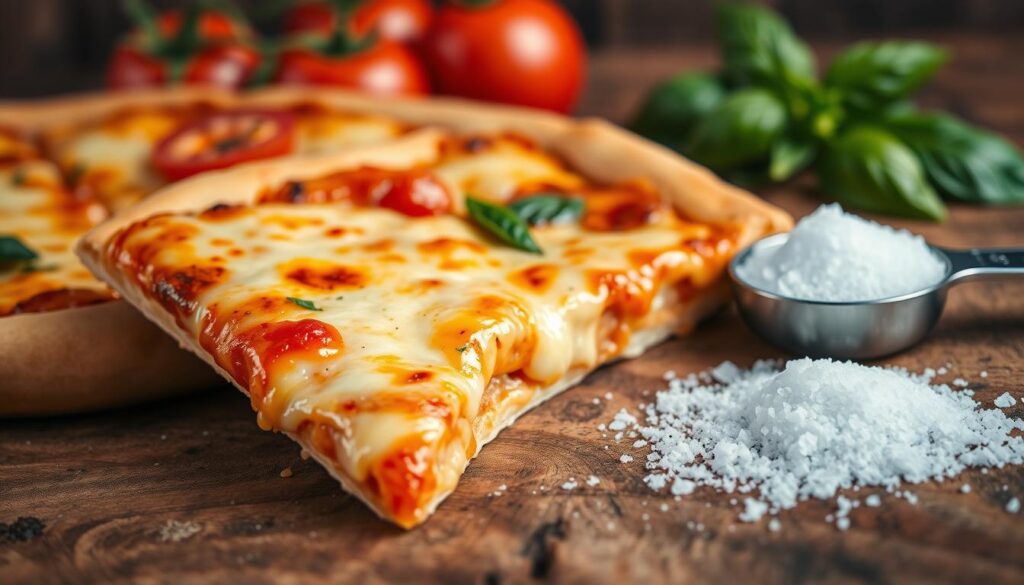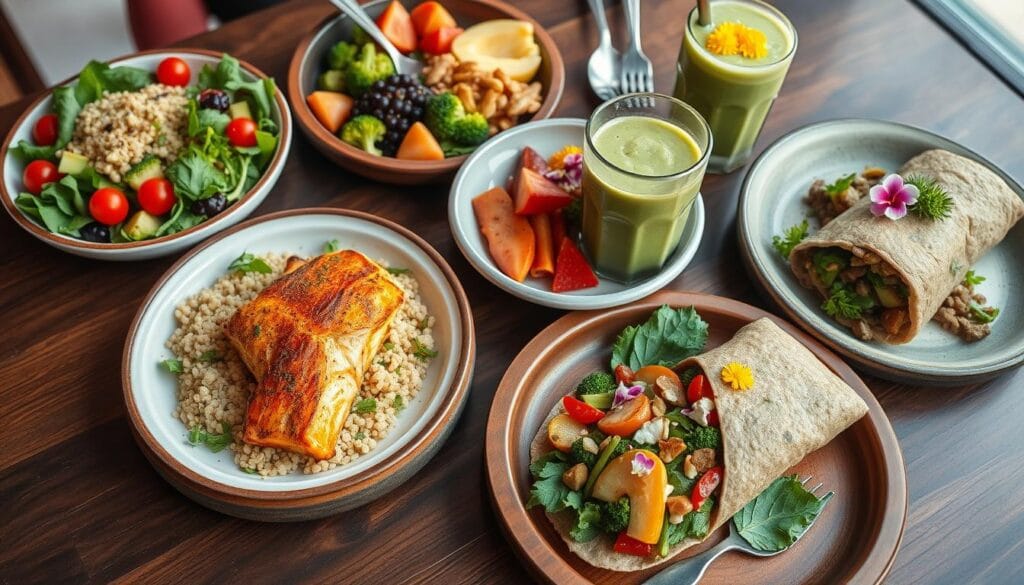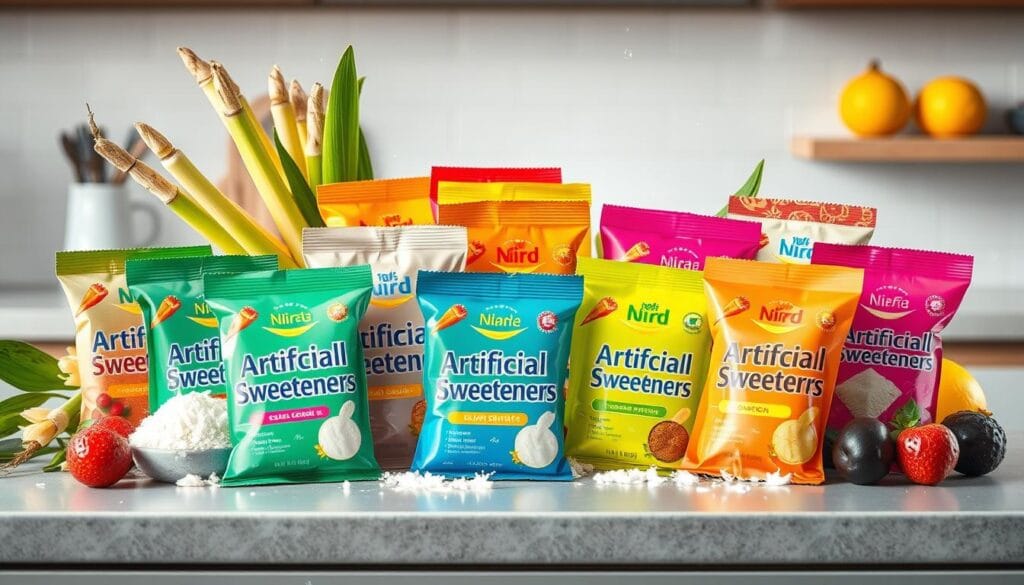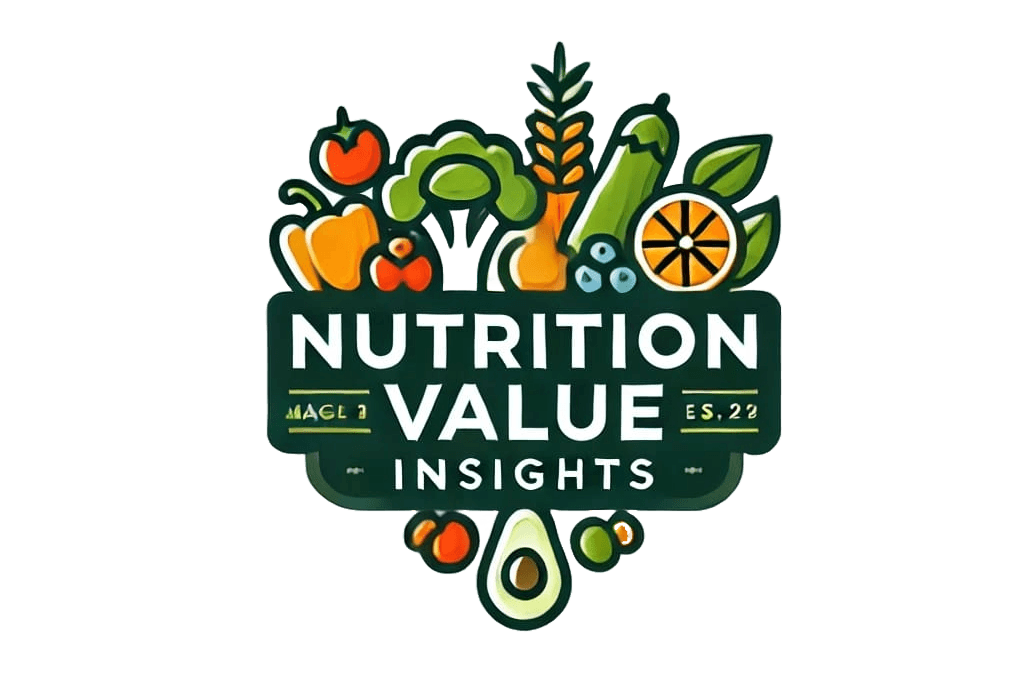The Truth About ‘Healthy’ Processed Foods: Are They Actually Good for You?
In today’s world, the idea of “healthy” processed foods is tricky and often confusing. Some processed foods can be good for you, but eating too much of the wrong kind can harm your health. This includes heart disease, some cancers, obesity, and type 2 diabetes.
It’s hard to know what to choose in the world of processed foods. They range from simple items like frozen veggies and canned beans to unhealthy, high-calorie snacks and drinks. Knowing how food is processed and its effect on nutrition helps you make better choices for your health.

Table of Contents
What are Processed Foods?
“Processed foods” is a broad term for foods that have been changed before we eat them. This includes everything from frozen fruits and veggies to cookies, chips, and sweet drinks. The way foods are processed can greatly affect their nutritional value and health effects.
Understanding the Spectrum of Food Processing
Not all processed foods are the same. Some, like bagged salads and frozen berries, are good for you. They’ve been lightly processed to keep their nutrients and last longer.
But, ultra-processed foods are different. They’re full of added sugars, salt, and unhealthy fats. Think packaged snacks, sugary cereals, and fast food. These foods are made to be very tasty and hard to stop eating.
| Minimally Processed Foods | Ultra-Processed Foods |
|---|---|
| Frozen fruits and vegetables Canned beans and lentils Plain yogurt Whole-grain breads | Cookies, cakes, and pastries Chips, crackers, and pretzels Sugary cereals Fast-food burgers and fries |
Knowing about food processing helps us make better choices. We can choose more of the good, minimally processed foods. And try to eat less of the unhealthy, ultra-processed ones.
The Pros of Processed Foods
Processed foods have their good sides. They can last longer and help cut down on food waste. They also make it easier to eat healthy, even when you’re busy.
Increased Shelf Life and Reduced Food Waste
Methods like canning and freezing make food last longer. This means less food goes to waste. It also keeps nutritious foods available all year round.
By reducing spoilage, processed foods help our planet. They play a big role in fighting global food waste.
Convenience and Ease of Preparation
Processed foods are great for saving time. They come in many forms, like pre-cut veggies and ready meals. This is a big help for people who don’t have much time to cook.
But, it’s key to pick the right processed foods. Look for ones that are still good for you. Knowing the good and bad of food processing helps you make better choices for your health.
The Cons of Processed Foods
Processed foods may seem convenient and last longer, but they have a dark side. They often have a lot of sodium, sugar, and unhealthy fats. These can harm your health.
High Levels of Sodium, Sugar, and Unhealthy Fats
Too much sodium can lead to high blood pressure, a big risk for heart disease. Added sugars in snacks and drinks can cause weight gain and type 2 diabetes. Unhealthy fats, like trans fats in baked goods and fried foods, can increase cholesterol and cause inflammation.
About 60 percent of the calories in the average American diet come from processed foods. Also, 70 percent of packaged foods in the U.S. are ultra-processed. Eating these foods often can lead to heart disease, cancer, obesity, and type 2 diabetes.
| Unhealthy Ingredient | Health Risks |
|---|---|
| Sodium | High blood pressure |
| Added Sugars | Weight gain, type 2 diabetes |
| Trans Fats | Increased cholesterol, inflammation |
It’s important to watch out for unhealthy ingredients in processed foods. By reading labels and choosing less processed options, you can stay healthy while still enjoying convenience.
“Eating ultra-processed foods has been linked to an increased risk of diabetes, obesity, cancer, depression, anxiety, and cognitive decline.”
Reading Food Labels: A Crucial Step
Shopping for food can be tough, especially finding healthy options. But, knowing how to read food labels is key. It helps you make choices that are good for your health.
The Nutrition Facts label is full of useful info. Look for foods low in sodium, added sugars, and unhealthy fats. Choose foods high in fiber, protein, and other good nutrients instead.
The ingredient list is also important. Avoid foods with long, hard-to-pronounce ingredients. Opt for foods made from simple, whole foods for better health.
| Nutrient | Recommended Daily Intake | Why It Matters |
|---|---|---|
| Sodium | Less than 2,300 mg | Too much sodium can lead to high blood pressure and heart problems. |
| Added Sugars | Less than 25-36 grams | Too many added sugars can cause weight gain, diabetes, and other health issues. |
| Fiber | 21-38 grams | Fiber is good for your digestion, heart, and keeps you feeling full. |
By reading food labels, understanding nutrition facts, and identifying healthier processed food options, you can make smart choices. A little effort in label-reading can help you navigate the complex world of processed foods.
Are Processed Foods Bad for You?
The debate on processed foods is ongoing. Many wonder if they can be healthy. While many processed foods have unhealthy ingredients, not all are bad. It’s about finding a balance and choosing nutrient-rich options.
The Role of Moderation and Balance
Processed foods offer convenience and can be nutritious. But, they should be eaten in moderation. Research shows that Americans eat about 60% of their daily calories from ultra-processed foods. This can lead to health problems like heart disease and depression.
To stay healthy, eat more whole foods like fruits, vegetables, and whole grains. By limiting processed foods and eating a balanced diet, you can enjoy their benefits without harming your health.
| Ultra-Processed Foods | Minimally Processed Foods |
|---|---|
| Snacks, sweets, and sugary beverages | Fresh fruits and vegetables |
| Frozen meals and fast food | Whole grains |
| Processed meats like sausages and hot dogs | Lean meats and fish |
| Baked goods like cookies and cakes | Nuts and seeds |
It’s important to find a balance and make smart choices about processed foods. By focusing on moderation and choosing nutrient-dense options, you can enjoy their benefits without harming your health.
Choosing Healthier Processed Foods
Not all processed foods are the same. Look for ones that are full of good stuff like fiber, protein, and vitamins. Foods like canned fruits and veggies, whole grain bread, plain yogurt, and canned fish are good choices.
It’s important to read food labels. This helps you find foods with less sodium, sugar, and bad fats. Look for labels with green for healthier options, amber for medium, and red for high amounts to limit.
Identifying Nutrient-Dense Options
Even processed foods can be part of a healthy diet. Some examples include:
- Canned or frozen fruits and vegetables
- Whole grain breads and cereals
- Plain, unsweetened yogurt
- Canned fish high in omega-3 fatty acids, such as salmon
- Tofu and other soy-based products
By picking these foods and checking labels, you can make smart choices. This way, processed foods can be both convenient and healthy.
| Nutrient-Dense Processed Foods | Nutrients Provided |
|---|---|
| Canned or frozen fruits and vegetables | Fiber, vitamins, and minerals |
| Whole grain breads and cereals | Fiber, B vitamins, and complex carbohydrates |
| Plain, unsweetened yogurt | Protein, calcium, and probiotics |
| Canned fish (e.g., salmon) | Omega-3 fatty acids, protein, and vitamin D |
| Tofu and other soy-based products | Protein, fiber, and isoflavones |
To pick better processed foods, always read labels. Look for foods with less sodium, sugar, and bad fats. Choose nutrient-dense options to support your health and well-being.
are processed foods healthy
The debate on processed foods’ healthiness is complex. Some processed foods can be good, but we must know which ones. It’s important to understand the different levels of food processing.
Minimally processed foods like frozen veggies, canned beans, and whole-grain cereals are healthy. They offer convenience and keep nutrients without losing them. These foods are great for a balanced diet.
But, heavily processed or “ultra-processed” foods are not good. They have too much sodium, sugar, and unhealthy fats. Foods like sugary cereals, chips, and pre-packaged baked goods can lead to health problems.
To make processed foods part of a healthy diet, read labels carefully. Look for foods rich in nutrients and eat them in moderation. This way, you can enjoy processed foods while keeping your health in mind.
| Healthy Processed Foods | Unhealthy Processed Foods |
|---|---|
| Frozen vegetables Canned beans Whole-grain cereals Nut butters Canned tuna or salmon | Sugary cereals Chips Prepackaged baked goods Deli meats Soda and other sugary drinks |
It’s best to eat whole, minimally processed foods most of the time. But, with careful planning and label reading, you can include some processed foods in a healthy diet.
“The key to incorporating processed foods into a healthy lifestyle is to read nutrition labels, identify nutrient-dense options, and consume even those in moderation as part of an overall balanced diet.”
Cooking at Home: The Healthiest Option
While processed foods can be part of a healthy diet, cooking at home gives you more control. You can avoid the bad stuff like sodium, sugar, and unhealthy fats found in many processed options. This way, you can make sure your meals are as healthy as possible.
Simple Swaps for Healthier Meals
Simple changes in your cooking can greatly improve your diet. Here are some easy healthy swaps for processed foods:
- Make your own salad dressing instead of using store-bought, which can be high in sodium and unhealthy fats.
- Choose frozen fruits and vegetables when fresh is not available. They keep most of their nutrients.
- Use lean proteins like chicken breast or fish instead of fatty meats like sausage or bacon.
A study from the University of Washington School of Public Health found that home cooks eat healthier without spending more. They spent about $60 less on food each month than those who ate out more.
Cooking at home often leads to better choices when eating out. It can also save money and reduce health costs. Home cooks may feel less stressed and happier because of their healthier diet.
“Cooking at home can support the immune system and provide more energy and better sleep.”
By following safe food handling at home, you can lower the risk of foodborne illnesses. Kids who cook and eat wholesome meals tend to have more energy and grow up healthy and confident.
| Benefit | Statistic |
|---|---|
| Cost Savings | Frequent home cooks spent about $60 per month less on food than those who ate out more often. |
| Healthier Choices | Regularly preparing home-cooked meals can lead to making healthier choices when eating out. |
| Mental Health | People who cook at home can have increased resilience to stress, anxiety, and depression. |
| Physical Health | Eating whole foods at home can increase joy in life by improving overall health and mood. |
Navigating Restaurants and Takeout
Eating healthy can be tough when you’re out or getting takeout. But, with smart choices, you can make better meals. At restaurants or with delivery, pick foods wisely to avoid too much sodium, sugar, and unhealthy fats.
When you look at a menu or check out takeout, search for healthy meal designations. Look for “light,” “fresh,” “fit,” “vegetarian,” or “skinny” labels. Many places also share detailed nutrition information online. This helps you pick meals that fit your diet.
It’s okay to request changes to your meal. Chefs at restaurants can make many adjustments. They can substitute ingredients, use healthier cooking oils, or serve sauces and dressings on the side. This helps you control what you eat.
- Look for the Heart-Check mark on menus to find healthier choices designated with trusted nutrition standards.
- Request butter, cheese, dressings, and sauces to be served on the side to control portion sizes and intake.
- Choose lean protein options, such as grilled chicken or fish, and opt for whole-grain or vegetable-based sides.
When faced with big portions, think about sharing an entree or saving half to take home. This way, you can enjoy your meal and still keep your diet balanced.

“Healthy meal designations or symbols, such as light, fresh, fit, vegetarian, and skinny, can be found on menus to indicate healthier options.”
Debunking Myths About Processed Foods
There are many myths about processed foods that make it hard to choose wisely. People often think all processed foods are bad or that MSG and carrageenan are always harmful. But, the truth is, not all processed foods are unhealthy. Many can be part of a healthy diet.
Some say all processed foods have too much sodium, sugar, and unhealthy fats. But, this isn’t true for all of them. A diet rich in processed foods, but still healthy, can be better than the usual American diet.
Another myth is that processed foods don’t have important nutrients. But, some processed foods do have nutrients like dietary fiber that are missing in many diets. A 2023 survey showed most people keep processed foods at home, showing they are still in demand.
It’s key to look at each processed food’s ingredients and nutrients. This way, you can choose wisely and eat a balanced diet with processed foods.
| Myth | Reality |
|---|---|
| All processed foods are unhealthy | The nutritional quality of processed foods exists on a spectrum, and many minimally processed options can be healthy |
| Processed foods are high in sodium, sugar, and unhealthy fats | While some highly processed foods may contain these, many processed foods can be a part of a nutrient-dense diet |
| Processed foods lack essential nutrients | Some ultra-processed foods actually contain vital nutrients like dietary fiber that are often lacking in a standard diet |
By understanding the details of processed foods and debunking myths, you can make better choices. These choices can help you reach your health goals and fit your dietary needs.
Controversial Ingredients: The Truth
Processed foods often spark debate over certain ingredients. Monosodium glutamate (MSG), salt, and carrageenan are at the center of this controversy. Yet, scientific research shows they are not as harmful as many believe.
MSG, Salt, and Carrageenan: Are They Really Harmful?
Monosodium glutamate (MSG) has been used in foods for decades. Despite myths, studies prove it’s safe. The FDA says MSG is “generally recognized as safe” (GRAS) for food use.
Salt, or sodium chloride, has faced criticism lately. While too much salt can harm health, it’s still needed in a balanced diet. The key is to consume it in moderation.
Carrageenan, a thickener from red seaweed, has also faced scrutiny. However, the food-grade version used in processing is deemed safe by the FDA.
It’s crucial to be aware of these ingredients but not to fear them. A balanced diet with variety is the best way to stay healthy.
The Role of Artificial Sweeteners
The safety and health effects of artificial sweeteners in foods and drinks are debated. Most studies say that sweeteners like erythritol, stevia, sucralose, and xylitol are safe in small amounts. They add sweetness without the calories and blood sugar spikes of regular sugar.
Using these sweeteners in moderation is important. They are not as harmful as some people think. In fact, many kids and adults in the U.S. use them.
The market for artificial sweeteners is growing fast. It reached about $2.2 billion in 2020 and is expected to keep growing. But, more research is needed on how they affect our bodies, like our gut health.
The Truth About No-Calorie Sweeteners
Artificial sweeteners can help people eat less sugar and manage their weight. But, it’s important to know their potential health effects and use them in small amounts.
| Sweetener | Sweetness Level Compared to Sugar | First Approved by FDA |
|---|---|---|
| Aspartame | 200 times sweeter | 1974 |
| Saccharin | 300 times sweeter | 1977 |
| Acesulfame Potassium | 200 times sweeter | 1988 |
| Sucralose | 600 times sweeter | 1998 |
| Neotame | 7,000 to 13,000 times sweeter | 2002 |
| Advantame | 20,000 times sweeter | 2014 |
Most research says artificial sweeteners are safe in small amounts. But, we still need to learn more about their long-term effects on our bodies, like our gut health.

Choosing to use artificial sweeteners is a personal decision. It depends on your health goals and what you like. Always use them in moderation and talk to a doctor if you have questions.
Conclusion
The topic of processed foods is complex, with no easy answers. Many ultra-processed foods are unhealthy, but there are also healthy options. The key is to understand food processing, read labels, and choose wisely.
Processed foods can be part of a healthy diet if eaten in moderation. Learning about processed foods helps you make better choices. This knowledge helps you navigate grocery stores and restaurants better.
The goal is to find a balance between processed foods and fresh ingredients. This way, you can enjoy the benefits of processed foods while staying healthy. By being mindful, you can make your diet better without losing health benefits.
FAQ
What are processed foods?
Processed foods are foods that have been changed from their natural state. This can include washing, canning, freezing, or adding ingredients like salt, sugar, and preservatives.
What is the spectrum of food processing?
Food processing ranges from simple steps like washing to complex processes that add unhealthy ingredients. Foods like frozen fruits and veggies are good, but foods like cookies and chips are not.
What are the benefits of processed foods?
Processed foods can last longer and reduce waste. They also make eating healthy easier. But, choose wisely to get nutritional value.
What are the downsides of processed foods?
Many processed foods, especially the ultra-processed ones, are high in sodium, sugar, and unhealthy fats. This can lead to health issues like high blood pressure and weight gain.
Why is reading food labels important?
Reading food labels helps find healthier processed foods. The Nutrition Facts label shows key nutrients like sodium, sugar, and fat. This helps choose foods with less unhealthy ingredients.
Are all processed foods bad for you?
No, not all processed foods are bad. It’s about finding a balance. Eat nutrient-dense, minimally processed foods and limit ultra-processed ones.
What are examples of healthier processed foods?
Healthier options include canned or frozen fruits and veggies, whole grain breads and cereals, plain yogurt, and canned fish. These foods are nutrient-dense and convenient.
Is cooking at home always healthier than processed foods?
Cooking at home gives you control over what you eat. You can avoid unhealthy ingredients found in many processed foods. Simple changes like making your own salad dressing can make meals healthier.
How can I make healthier choices when dining out or ordering takeout?
To make healthier choices, ask about dish preparation, request sauces on the side, and choose lean proteins and veggies. This limits unhealthy ingredients.
Are there myths and misconceptions about processed foods?
Yes, many myths exist about processed foods. Claims about MSG and carrageenan are often exaggerated. It’s important to look at the specific ingredients and nutrients in each food.
Are controversial ingredients like MSG, salt, and carrageenan actually harmful?
No, the science doesn’t support harm from these ingredients. MSG is safe, regular salt is essential, and food-grade carrageenan is safe. Moderation is key, but they’re not as bad as some say.
What about artificial sweeteners used in processed foods?
Most research shows artificial sweeteners like erythritol, stevia, sucralose, and xylitol are safe in moderation. They offer sweetness without calories and don’t seem to be harmful.
DID OUR INFORMATION HELP YOU ?
There are no reviews yet. Be the first one to write one.

